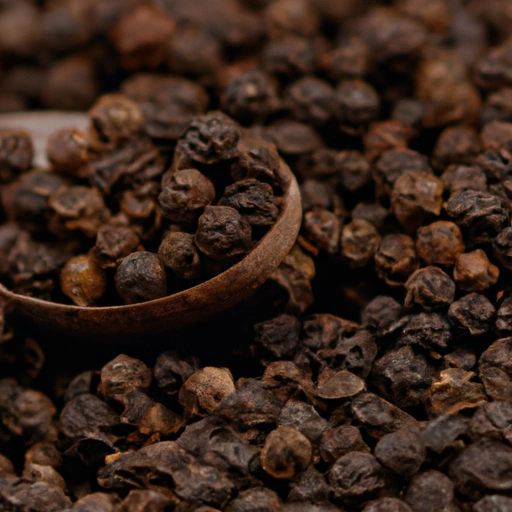Black Pepper
Description

Black pepper, known scientifically as Piper nigrum, is a flowering vine in the family Piperaceae. It is cultivated for its fruit, which is usually dried and used as a spice and seasoning. When dried, the fruit is known as a peppercorn. Black pepper is the world's most traded spice and is one of the most common spices added to European cuisine and its descendants. The sharp and mildly spicy flavor of black pepper makes it a popular additive to numerous culinary creations around the globe.
Common uses
Black pepper is widely used as a seasoning, garnish, and preservative. It's found on dining tables in shakers, used whole in pickling, and incorporated into spice blends and rubs.
Nutritional value
Calories
A teaspoon (about 2 grams) of black pepper contains approximately 5 calories.
Protein
Black pepper provides about 0.2 grams of protein per teaspoon.
Fat
There is a trace amount of fat in black pepper, totaling around 0.1 grams per teaspoon.
Carbohydrates
Black pepper contains about 1.3 grams of carbohydrates per teaspoon.
Vitamins
While not a significant source of vitamins, black pepper does provide small amounts of vitamin A, C, and K.
Minerals
Black pepper is a good source of minerals, particularly manganese, with a teaspoon offering about 0.1 milligrams. It also contains small amounts of calcium, magnesium, phosphorus, potassium, and iron.
Health benefits
Black pepper may offer various health benefits including digestive health support, enhanced nutrient absorption, and anti-inflammatory properties. Its active compound, piperine, is thought to improve metabolism and promote weight loss.
Potential risks
Overconsumption of black pepper can lead to gastrointestinal irritation or more severe issues in some individuals. It may also interfere with certain medications, so it's important to use it in moderation and consult with a healthcare provider if you have any concerns.
Common recipes
Black pepper is used in virtually all savory recipes, from soups and stews to meats and marinades, as well as in many sauces and salad dressings.
Cooking methods
Black pepper can be added at various stages of the cooking process, from initial seasoning to a final garnish. It can be used whole, crushed in a pepper mill, or ground.
Pairing with other ingredients
Black pepper pairs well with various foods, including beef, chicken, fish, eggs, potatoes, and many vegetables. It also complements other spices, such as garlic, cumin, and coriander.
Summary
Black pepper is an essential spice with a rich history and global use. It adds depth and heat to dishes without overpowering other flavors. Versatile in its use and valued for its potential health benefits, black pepper is a staple in kitchens worldwide.